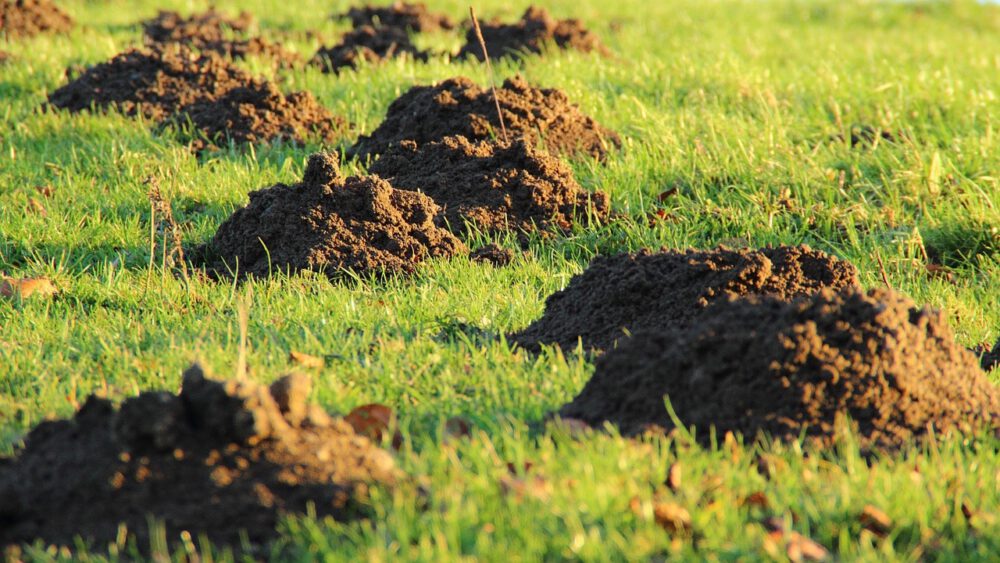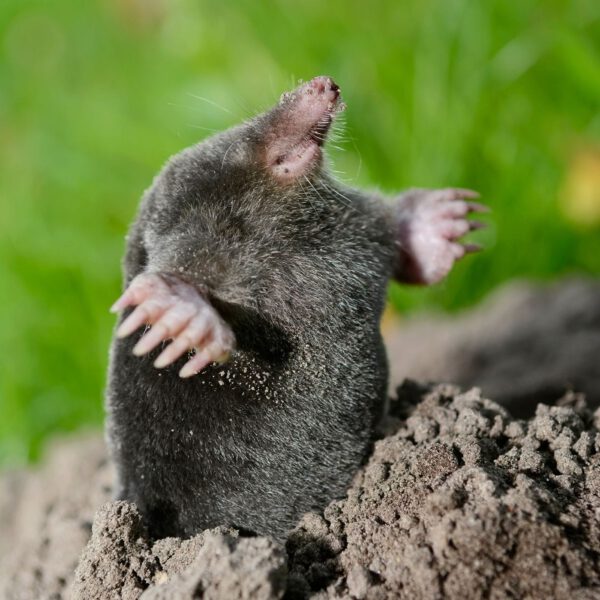Moles In Your Yard
If you have ever woken up to molehills in your yard, there is no mistaking the mark moles leave on your lawn or garden. If you see mounds or trails from one pile to another in your yard that seem to have come up overnight, they probably did.
Identifying which pest is making a mess in your lawn is the best way to determine the course of action to follow. However, you don’t need to worry about all that. Contact Covenant Wildlife Removal to remove the wildlife safely and save your family and home from the hassle and damage they create.
The Facts About Moles
Moles are ground-dwelling little pests that will make a big mess of your property. Although it would seem they love to eat your lawn, that is just not true. Moles are often confused with mice, gophers, the shrew, and voles. However, moles are not rodents. Please keep reading to learn more about why they have torn up your gorgeous yard.

Mole Appearance
These little mammals are quite the sight. However, they barely have any vision at all. The most identifiable part of the mole is their hairless pointed snout. Their tiny eyes and ear canals hide in their dense fur. Their front feet are broad and webbed. And their hind feet are slimmer with large claws.
Getting to know them, you will identify the following attributes.
- Length: 5-7 inches
- Weight: about 4 oz.
- Coats: Short and furry, covering their cylindrical bodies
- Life Span: about three years
Mole Behavior
Famous for their large, sharp ails, they will dig molehills and trenched in your lawn overnight. They travel between the hills making a den deep within one. Additionally, they can dig up to a foot per mile, and they have to eat every few hours to survive.
Moles are active year all year round. But they are the most active in the spring and fall. They create surface ridges and tunnels in the top 6 to 12 inches of a yard where most of the food supply is located. Because the food source is deeper in the ground during winter moles, moles burrow deeper into the soil searching for food.

Mole Diet
Moles are insectivores. When they tear up your lawn and garden, they are searching for those succulent insects deep in your rich soil. They like worms, grubs, earthworms, beetles, ants, and other insect larvae.
According to The Old Farmer’s Almanac,
“If you have a significant invasion of moles or similar pests, it may be a sign of trouble. Moles are usually found where soil is rich in organic matter. Their presence in unusually large numbers might be due to a high population of soil pests. It therefore serves as a warning that all is not well with the soil life.”
Mole Reproduction
The mating season for moles is early spring, with a gestation period between 4 to 6 weeks. One litter is born each year with two to seven babies. As soon as the babies grow, they leave home to establish their own elaborate tunnel systems.
The Damage They Can Create
Moles can ruin your entire landscape very fast, even overnight, if there is more than one. The good news is they seldom enter your house to cause problems indoors. In the yard, moles kill your grass by separating the soil from the grass roots, leaving brown spots and tunnels on the lawn. And if they get into the garden, they will do the same by separating roots from plants.

Covenant Wildlife Removal Removes Moles from Your Home
Covenant Wildlife Removal comes in to save the day and your yard. The most common way to remove moles is to trap them. However, you need not worry about that. At Covenant Wildlife Removal, we are fully equipped and experienced at getting to the source of the problem to eradicate the wildlife.
Steps to Mole Removal:
- Identify the main “highways” of the moles.
- Put down multiple traps.
- Check on the traps several times per week.
- Relocate the traps as the moles migrate to untouched areas.
Covenant Wildlife Removal is a top-rated local family-owned, full-service wildlife trapping, removal, and repair service. We can remove a mole or other wildlife infestation before it becomes an extensive problem for you and your family.
Contact us or call 205-850-5760 to set up an inspection.
